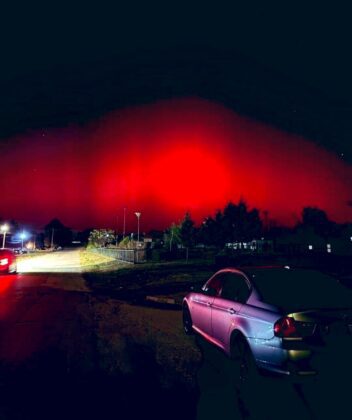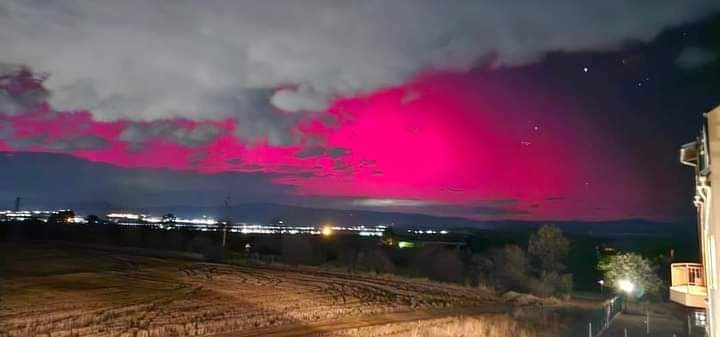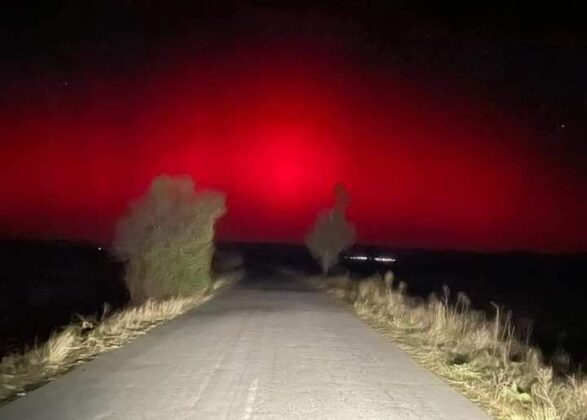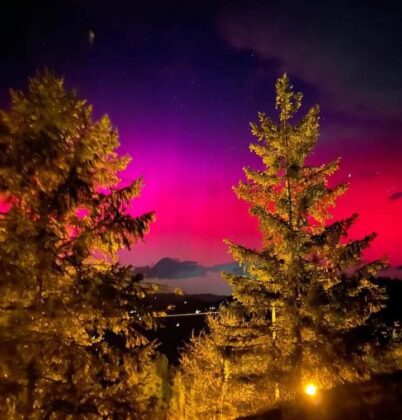
Bulgaria observes an unusual red glow in the skies believed to be red Aurora lights. The rare phenomenon causes multicoloured lights to dance in the sky. The red and magenta colours were the most dominant.
Numerous pictures of this rare natural phenomenon were shared by Bulgarian residents who witnessed this red Aurora Borealis in Bulgarian skies. The incident also attracted the attention of various individuals worldwide.
The residents of several Bulgarian provinces observed the light show in Varna, Burgas, Shumen, kazanlak, Haskovo, Chepelare, Targovishte and other cities of the country.
On social media platforms, the Sofian residents demonstrated their disappointment as these rare red Aurora borealis were not seen in the capital, Sofia.
Physicists explain that the glowing red lights in the sky are not the Aurora Borealis. Instead, they are caused by oxygen molecules interacting with solar activity.
Usually, oxygen is present in the atmosphere in low concentrations. Still, during periods of high solar activity, it interacts more with the solar radiation, resulting in the distinct red colour the viewer observes.
Instead of Bulgaria, these Red-magenta-purple Northern Lights were also seen in Hungary, Romania, Slovenia, Poland, Italy, Greece and many European Countries. What may cause this phenomenon?
The northern lights, also known as the aurora borealis, are a natural light display in the sky, predominantly seen in the high-latitude regions (around the Arctic and Antarctic).
The effect is caused by the collision of energetic charged particles from the sun with atoms in the Earth’s atmosphere. The colour of the aurora depends on the type of atom or molecule that is being excited.
The Balkans are located in southern Europe at a relatively low latitude. This means that the northern lights are not typically seen in this region.
However, on rare occasions, the aurora borealis can be seen as far south as the Balkans. This is usually due to a particularly strong solar storm, which can produce enough energy to excite the atmosphere at lower latitudes.
The red-magenta colour of the aurora borealis seen in the Balkans last night is likely due to the excitation of nitrogen atoms. Nitrogen atoms are very common in the Earth’s atmosphere, and they emit red-magenta light when they are excited.
Another possible explanation for the red-magenta colour is the presence of oxygen atoms in the upper atmosphere.
Oxygen atoms emit different colours when excited, including red, magenta, and green. The colour emitted depends on the energy of incoming particles and the state of the oxygen atom.
It was predicted that the red-magenta colour of this aurora borealis was caused by multiple factors, including the excitation of both nitrogen and oxygen atoms.
Usually, the appearance of Northern lights in Balkan regions is very rare, and the red magenta colour is highly unique. However, it is still has the possibility to define this rare phenomenon by considering the effects of solar storms and the activity of atoms in the Earth’s atmosphere during the incident.







